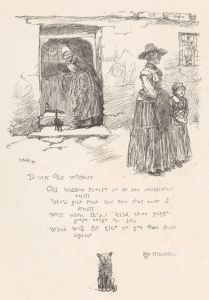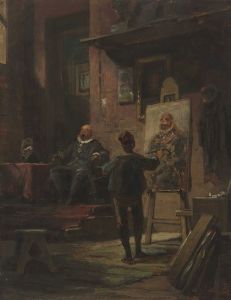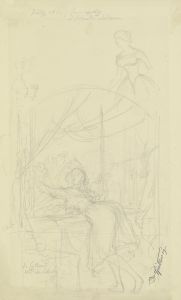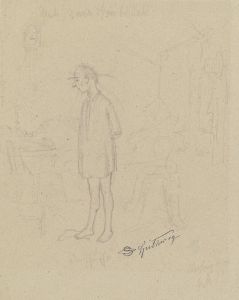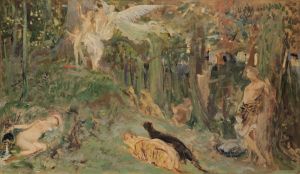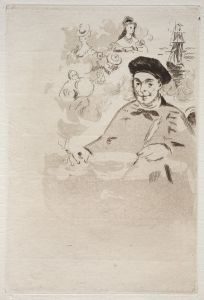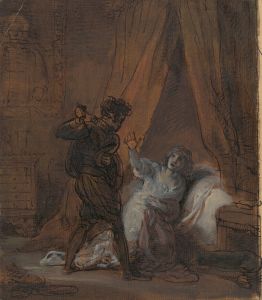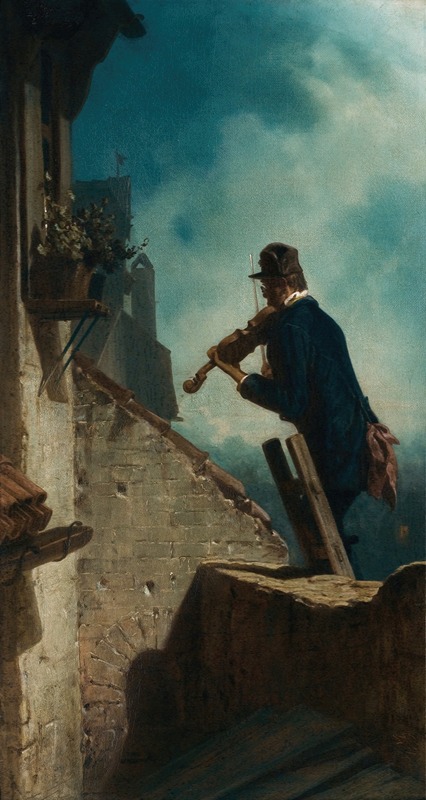
Ständchen
A hand-painted replica of Carl Spitzweg’s masterpiece Ständchen, meticulously crafted by professional artists to capture the true essence of the original. Each piece is created with museum-quality canvas and rare mineral pigments, carefully painted by experienced artists with delicate brushstrokes and rich, layered colors to perfectly recreate the texture of the original artwork. Unlike machine-printed reproductions, this hand-painted version brings the painting to life, infused with the artist’s emotions and skill in every stroke. Whether for personal collection or home decoration, it instantly elevates the artistic atmosphere of any space.
"Ständchen" (Serenade) is a painting by the German artist Carl Spitzweg, created around 1854. Spitzweg, born in 1808 and passing in 1885, was a notable figure in the Biedermeier period, known for his detailed and often humorous depictions of everyday life. His works frequently capture the quaint and charming aspects of 19th-century German bourgeois society.
"Ständchen" is one of Spitzweg's well-known pieces and exemplifies his characteristic style. The painting depicts a romantic scene where a young man serenades a woman who is leaning out of a window. The setting is a narrow, picturesque street, typical of Spitzweg's urban scenes, with detailed architecture that adds to the charm and intimacy of the moment. The serenader is often portrayed with a musical instrument, typically a guitar, emphasizing the romantic and somewhat whimsical nature of the scene.
The composition of "Ständchen" reflects Spitzweg's keen eye for detail and his ability to capture the essence of a moment. The lighting in the painting is soft, creating a warm and inviting atmosphere. The use of light and shadow is particularly effective in highlighting the figures and the architectural elements, drawing the viewer's eye to the central action of the serenade.
Spitzweg's work is often noted for its narrative quality, and "Ständchen" is no exception. The painting tells a story of courtship and romance, a common theme in Spitzweg's oeuvre. The interaction between the serenader and the woman at the window is tender and intimate, suggesting a personal connection and a moment of shared affection. This narrative element is enhanced by the detailed background, which provides context and depth to the scene.
Carl Spitzweg was largely self-taught as an artist, having initially pursued a career in pharmacy. His transition to painting was gradual, and he drew inspiration from the works of earlier artists as well as his own observations of everyday life. Spitzweg's paintings often include a humorous or ironic twist, reflecting his keen sense of observation and his ability to find beauty and interest in the mundane.
"Ständchen" is housed in the Neue Pinakothek in Munich, Germany, which holds a significant collection of 19th-century art. The painting is a fine example of Spitzweg's work and continues to be appreciated for its charm, detail, and the artist's unique ability to capture the spirit of his time.
In summary, "Ständchen" by Carl Spitzweg is a quintessential example of the artist's style, combining detailed observation, narrative depth, and a warm, inviting atmosphere. It remains a beloved piece within the context of 19th-century German art, reflecting the romantic and often whimsical nature of Spitzweg's work.





